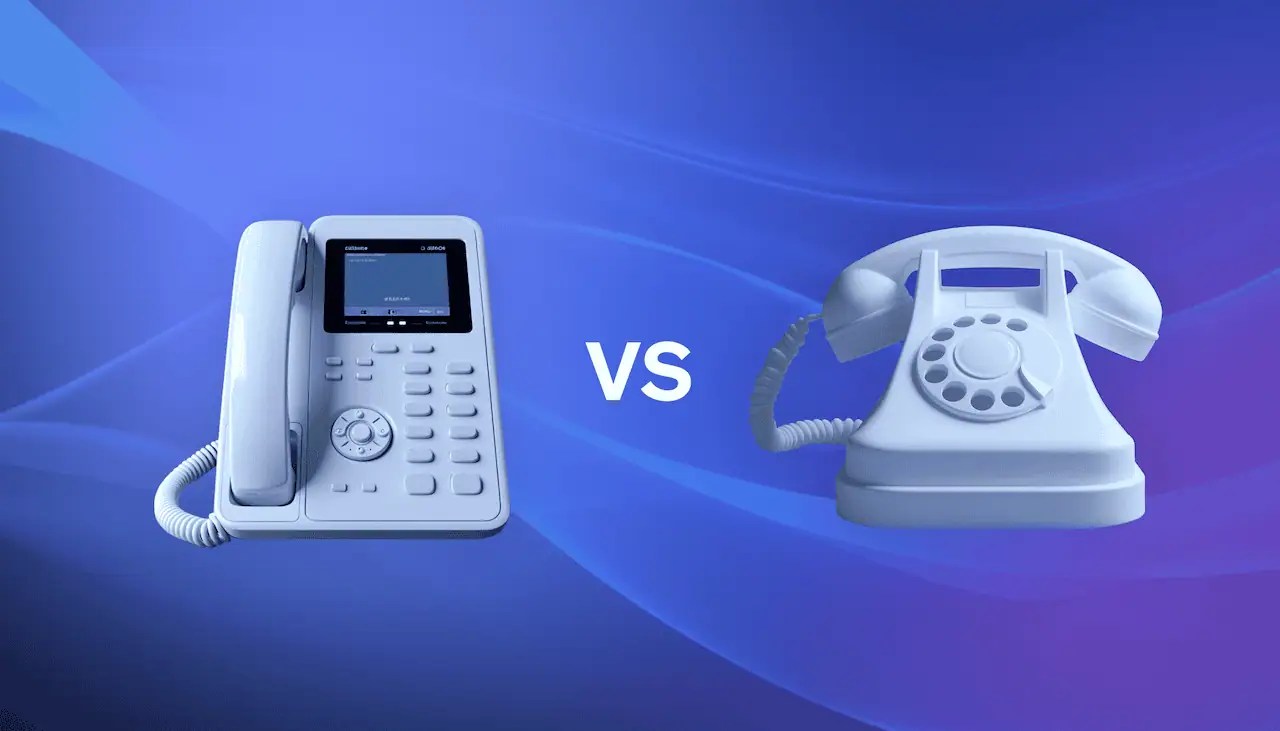Lost calls, long wait times, and outdated technology — call center managers know the pain of running on poor technology.
Customers demand fast, personalized, and omnichannel service, and modern call center technology is rising to the challenge.
Gone are the cramped booths and tangled cords. Today’s contact center solutions are powered by innovative tools like automation, artificial intelligence (AI), and self-service, creating effective customer experiences that value human connection and keep clients coming back for more.
This article explores the key call center technologies in use today, their benefits, examples, trends, and what the contact center of the future may look like.
What Is Call Center Technology?
Call center technology is a collection of integrated digital and communication platforms that enable businesses to easily manage, track, and optimize customer interactions across multiple channels.
These advanced technological solutions go beyond traditional phone-based communication, including a range of digital touchpoints such as voice calls, email, live chat, social media messaging, SMS, video conferencing, and other emerging communication channels.
Contact center technology aims to optimize the entire customer journey. It helps route and manage all customer interactions efficiently, enabling quick resolutions and exceptional customer service.
Some key components and examples of call center technology include:
- Omnichannel communication systems: Unified platforms that integrate multiple communication channels, like voice, email, and chat, to provide a seamless and consistent customer experience.
- Customer relationship management (CRM) integration: Software that consolidates customer data and interaction history to enable personalized, informed support, giving contact center agents a complete view of the customer.
- Artificial intelligence and automation tools: Intelligent systems like chatbots and predictive analytics enhance customer service efficiency and provide round-the-clock support, automating tasks and offering proactive assistance.
- Interactive voice response (IVR) systems: Automated menu systems that route customers to appropriate departments, reducing manual intervention and wait times.
- Performance analytics and reporting: Real-time dashboards that track contact center performance, customer satisfaction, and key performance indicators (KPIs), providing valuable insights for optimization.
- Call recordings: Essential for quality management, training resources, and monitoring interactions, call recordings offer valuable insights into customer behavior and help improve overall service quality.

For customer service leaders seeking to strengthen customer relationships, investing in the right contact center technology is a must. Adoption does require upfront software investment and agent training, but the long-term benefits make this a priority.
What Kinds of Technologies Contact Centers Use?
Several core technologies are essential for a productive call center and form the foundation for excellent customer service. Let’s look at some key contact center technologies:
1. VoIP
VoIP (Voice over Internet Protocol) powers business phone systems by enabling feature-rich, high-quality calling over the Internet. VoIP goes beyond replicating landline functionality; it integrates next-generation unified communications, including calls, voicemail, SMS, and fax to improve customer engagement.
With VoIP, calls are routed over secure broadband connections, allowing flexible access anywhere across software phones, traditional cell phones, and mobile devices. This makes remote work easier and ensures business continuity. VoIP also future-proofs investments and easily scales to support business growth, often at a lower cost than traditional phone lines.

Advanced cloud-based VoIP features such as auto attendants, call recording, intelligent call routing, omnichannel queuing, analytics, and built-in redundancy optimize the customer experience. Tight CRM integrations enable personalized service with instant access to customer records.
2. CRM integration
Great customer support starts with context. A customer relationship management (CRM) system captures invaluable data — order histories, support tickets, product preferences, and more. CRM integration helps contact center agents access these details when they need them most. For example, an agent can see a customer’s past purchase history and offer personalized product recommendations.
CRM-telephony integration unites data with calls, powering functionalities like:
- Intelligent call routing: Customer value tier and history automatically determine priority queueing and agent assignment.
- Enhanced reporting: Granular speech analytics mines calls for insights on satisfaction, common requests, and churn risk factors to refine support strategies.
- Streamlined workflows: Click-to-call options, screen recording, and data capture eliminate toggling between systems.
- Proactive outreach: Integrated dialers enable timely callback campaigns based on purchase history and past issues.
CRM integrations optimize workflows while enabling personalized, contextual interactions, driving intelligence-driven customer service. Agents spend less time digging for information, managers get data-backed recommendations, and customers get the dedicated care they deserve.

3. Interactive voice response (IVR)
No one likes endless hold or being transferred to the wrong department. An IVR system offers a positive first impression by greeting customers and intelligently routing calls using voice prompts and menu options.
An effective IVR system can:
- Reduce call abandonment by getting callers to the right agent quickly.
- Lower costs by automating simple queries and providing self-service.
- Improve customer satisfaction through shorter wait times.
- Allow agents to focus on complex issues.

As an example, a caller could hear “Thank you for calling ABC Company, if you know your party’s extension, dial it now. For billing questions, say or press 1. For tech support, say or press 2.”
The menu options then route the customer directly to the correct department. Optional sub-menus can further qualify the query if needed. Customers can speak or use touch-tone commands.
4. Skills-based routing
Skills-based routing automatically sends customer inquiries to call center agents with the skills to handle them. This prevents misrouted calls and improves customer satisfaction. For example, billing questions are routed to billing agents, while technical issues go to technicians.
Skills-based call routing uses pre-configured agent skills profiles to connect each customer to the right agent. It can also be used to route calls based on language proficiency or other agent attributes.

Let’s say Mohammed specializes in billing and payment processing. He hasn’t received training on troubleshooting broadband connectivity issues.
When a customer calls with a broadband problem, skills-based routing will connect them to Tina rather than Mohammed. As a broadband technician, Tina can diagnose the issue and restore service promptly.
Routing calls based on agent skills minimize transfers, reducing handle time and improving first-call resolution rates.
Customers’ problems are addressed quickly without repeating information to multiple agents, improving contact center efficiency and customer satisfaction.
Related: How to Overcome These 15 Contact Center Problems
5. Call queuing
When call volumes exceed agent capacity, effective call queuing helps manage the customer experience during inevitable wait times. Call queues set proper expectations around delays while deploying features to shorten queue times. Prioritizing calls based on urgency or customer value is also important.
Key call queuing capabilities include:
- Estimated wait time announcements: Letting callers know the expected delay sets the right expectations and prevents abandoned calls.
- Queue position announcements: Informing callers of their place in the queue gives them confidence that they’re steadily advancing.
- Music/messages on hold: Silence can feel unnatural and cause callers to hang up. Custom music or recorded messages improve the experience.
- Automatic call distributor (ACD): Call center software automatically distributes calls rather than agents manually answering, enabling quicker connections to appropriately skilled agents.
- Callbacks: Callers close to reaching agents can request a callback rather than waiting on hold, a preferred option for many customers.

The most effective queues balance technology and communication to ease the waiting experience.
Transparent estimations, intelligent routing, and callback options demonstrate respect for a caller’s time. This drives greater satisfaction despite delays from high demand.
6. Computer Telephony Integration (CTI)
Computer Telephony Integration (CTI) is a powerful technology that bridges the gap between computer systems and telephony, enabling call center agents to manage calls more efficiently and provide exceptional customer service. CTI systems offer real-time access to customer information, including contact details, call history, and account data, right at the agent’s fingertips.
One of the key benefits of CTI is its ability to automate various tasks, such as call logging, call routing, and call recording. This automation frees up agents to focus on more complex customer interactions, enhancing their productivity and allowing them to deliver a higher level of service.
For instance, when a call comes in, a screen pop can display the customer’s information on the agent’s screen, providing immediate context and reducing the need for repetitive questions.
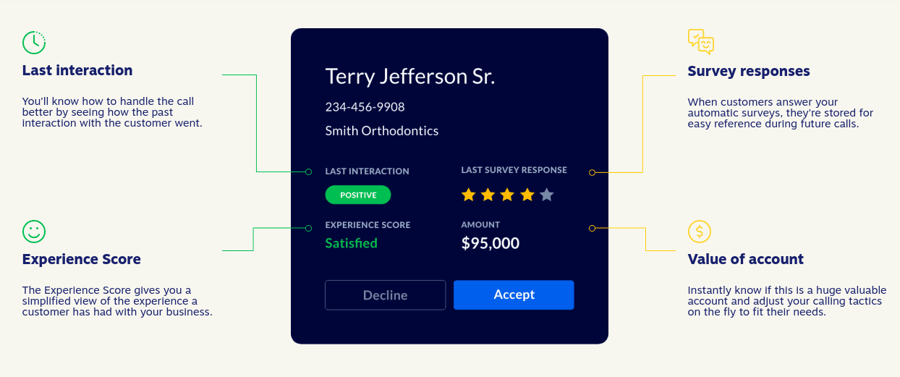
CTI systems also support advanced features like call recording, which is essential for quality assurance and training purposes. Integrating telephony with computer systems, CTI enables a seamless flow of information, ensuring that agents have all the necessary tools to provide personalized and efficient service. This integration not only improves operational efficiency but also contributes to a more satisfying customer experience.
7. Predictive dialer
Outbound call centers help businesses connect with potential customers to drive sales, market research, or generate leads. Predictive dialers can also be used for customer satisfaction surveys or appointment reminders.
Manually working through lists is tedious and prone to human error. Predictive dialing eliminates overhead and optimizes engagement rates by automatically queuing and placing calls with leads.
Sophisticated algorithms determine when agents finish current calls and automatically dial the next number queued for attention. This ensures reps stay productive by eliminating downtime between interactions. Caller ID even displays account information beforehand, allowing agents to personalize outreach.

For scheduled callbacks, predictive technology monitors staff availability in real time. Once an agent is free, the system automatically places the callback without agent intervention.
Predictive dialers funnel warmed leads, driving better agent productivity. Customers appreciate timely, professional follow-through. It’s a win-win for operational efficiency and customer trust.
8. Call analytics
Using call analytics, you can gain insights to make faster, better decisions for your business. For example, you can identify calls with long hold times and provide coaching to reduce wait times.
Managers can forecast call volume, track call metrics, and route calls based on real data. Choose from real-time, historical, and overall analytics across your business dashboard to work out which departments and channels perform best or need improvement.
With the right analytics tool, you get out-of-the-box reports or can build your own to measure exactly what you need at any given time.

9. Conversational AI
Conversational AI using chatbots and intelligent virtual assistants, provides automatic and personalized self-service options. Conversational AI can also be used to personalize marketing messages or provide proactive customer support.
For simple, repetitive inquiries like store locations or account balances, AI-driven chatbots deliver instant 24/7 resolutions through natural language conversations. This reduces call volumes so agents can focus on complex issues.
Additionally, virtual assistants analyze context and user history to provide relevant recommendations during interactions.
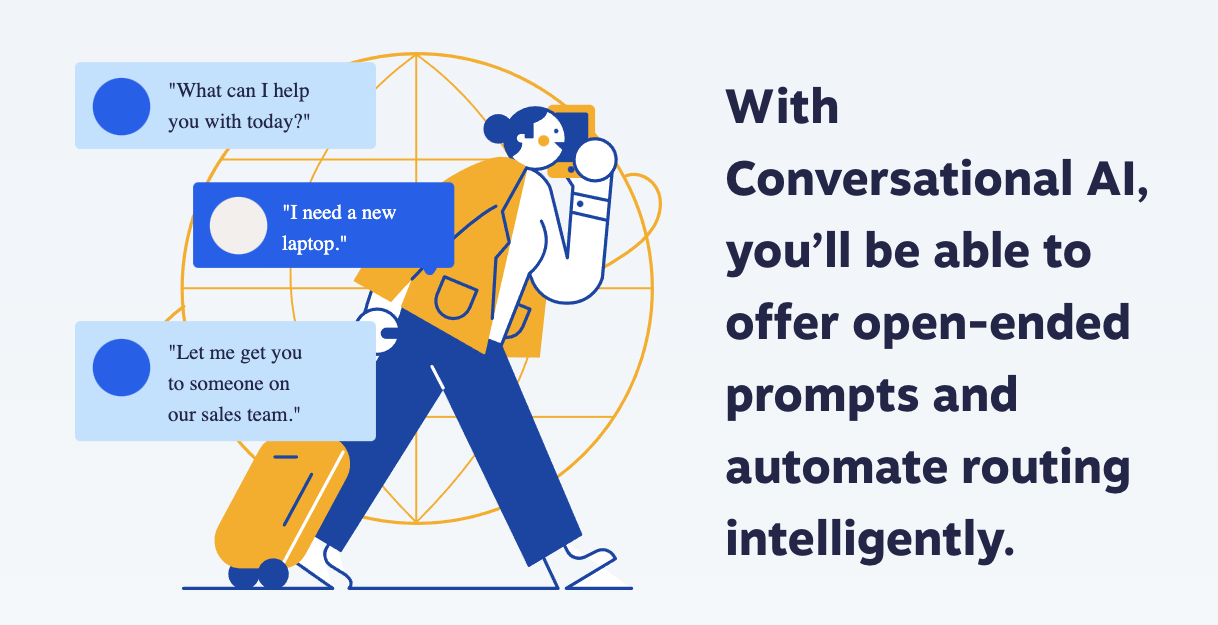
Conversational AI also streamlines call routing.
Advanced speech recognition parses spoken requests to instantly connect callers with the optimal department. Sentiment detection ensures priority queueing for distressed customers.
These intelligent self-service tools increase customer satisfaction by 10 points or more while cutting inquiry times by over 90%, providing convenient automated assistance across languages and channels.
10. Voicemail to email
Voicemail-to-email integration helps ensure that customer inquiries do not slip through the cracks. It can also improve accessibility for agents with hearing impairments.
With this feature, agents and managers automatically receive email alerts with audio recordings and voice-to-text transcripts whenever a new voicemail comes in. Better visibility allows them to quickly triage and delegate the next steps based on urgency and staff availability.
Proactive notifications and centralized access to inquiry details prevent customer issues from being overlooked. The ability to instantly discern the topic without having to listen to messages saves managers time.

Most importantly, voicemail-to-email enables call centers to meet their SLAs and speed up resolution.
Customers get callbacks faster, and no opportunity goes unaddressed. This reliability transforms an often neglected communication channel into a catalyst for providing better service.
Related: Contact Center Architecture: How Contact Centers Work
Top Benefits of Contact Center Technology
Modern contact centers are no longer just cost centers; they drive immense business value. Call center technologies offer many benefits, encouraging businesses to invest in them and enrich their customer service.
1. Increase customer satisfaction
Intelligent call routing technologies analyze customer requests in real time and route them to the most qualified agents based on expertise, language skills, and past performance. This precision ensures that customers receive the most appropriate help quickly, reducing wait times and increasing satisfaction.
Modern contact center platforms offer intuitive self-service portals and AI-powered chatbots for customers to find solutions independently. These tools handle simple requests, process transactions, and provide instant information, reducing the burden on human agents while meeting customers’ expectations for instant service.

2. Improve agent productivity
Sophisticated automation tools eliminate repetitive and time-consuming manual processes. Contact center technology such as intelligent callback systems, automated data entry, and intelligent scheduling free up agent time for more complex customer interactions and high-value conversations that require human empathy and problem-solving.
3. Reduce operational costs
Cloud-based contact center technologies don’t need upfront hardware investments. Businesses can easily scale their capabilities, adding or reducing features without complex infrastructure upgrades. This flexibility adapts organizations quickly to changing customer demands and market conditions.

4. Make data-driven and informed decisions
Call center analytics tools provide deep insights into customer interactions, agent performance, and operational efficiency. Contact center managers can use real-time data to identify trends, recognize top performers, address training needs, and make informed strategic decisions that enhance customer service.
4 Call Center Technology Trends To Follow
There’s no doubt we’re experiencing a shift in call center technology. Features do get rolled out regularly. So it’s important to always be aware of potential and emerging trends.
1. The rise of AI and automation across all touchpoints
Intelligent virtual assistants and chatbots are being implemented to handle routine, repetitive inquiries from customers. Automation allows human agents to address more complex customer issues and questions.
Chatbots use natural language processing to understand questions while machine learning helps them improve answers over time.
Automated call routing systems powered by AI can study past interactions and caller data to determine where to direct incoming calls most effectively. This improves efficiency and first-call resolution.
Speech analytics further aids routing by analyzing real-time call dialogues.

2. Omnichannel as the new standard for customer engagement
Customers want flexibility in how they engage with brands. Call centers are unifying capabilities across channels like voice, email, messaging apps, social media, and self-service web portals.
Customer interactions across channels are logged into centralized systems for agents to reference.
Cloud computing enables omnichannel call centers to integrate multiple channels into one system.
For example, chat histories with customers are visible to the agent that the customer later speaks to over the phone.
3. Remote and hybrid teams on the horizon
Cloud-based solutions have enabled many call center workers and service agents to operate productively from anywhere.
Workforce management tools help leaders oversee distributed teams by tracking key call center metrics and ensuring quality interactions.
However, supporting remote staff requires concerted engagement strategies involving overcommunication, digital team building, and an emphasis on wellness and work-life balance to prevent isolation and burnout.
Leaders must rethink how to motivate and unite hybrid on-site/remote workforces.

4. Analytics driving service excellence
More call centers are tapping into the wealth of data from customer interactions to uncover actionable customer insights. Speech, text, and QA analysis tools can decode recorded customer calls and online chats to identify areas for improvement.
Pairing these findings with operational analytics helps diagnose inefficiencies while conveying changing customer sentiments. Automating quality monitoring also provides consistent evaluations so leaders can pinpoint coaching opportunities.
5. Security, ethics, and transparency taking center stage
In the age of data-driven customer service, contact centers face a critical responsibility: safeguarding sensitive information while leveraging powerful technologies like AI ethically and transparently. This requires a careful approach that prioritizes:
- Data security: Protecting customer information requires strong encryption, strict access controls, and regular security audits. Contact centers must strictly comply with data protection regulations such as GDPR, CCPA, and HIPAA to ensure legal and ethical data handling.
- Ethical AI: Implementing AI in contact centers requires careful consideration of fairness and bias prevention. Systems should be designed to be transparent, with clear explanations of decision-making processes and consistent human oversight to mitigate possible discriminatory outcomes.
- Building trust through transparency: Open communication is essential. Contact centers should clearly explain their data collection practices and AI usage and provide customers with options to control their personal data. This approach not only protects customer data but also increases trust and strengthens brand reputation.

By weaving security, ethics, and transparency into your call center operations, you can not only protect customer data and ensure responsible AI usage but also cultivate trust, enhance brand reputation, and create more meaningful and authentic customer interactions.
Related: The Complete Guide to Launching a Customer Service Contact Center
Choosing the Right Call Center Technology
Contact centers are undeniably headed toward greater automation, integration, and customer self-service.
To stay ahead, businesses must carefully choose technologies that enhance both efficiency and the customer experience. Cloud-based contact center platforms are essential for the seamless integration of phone systems, CRM, and other critical software. AI-powered chatbots can handle routine inquiries, freeing up contact center agents for complex issues.
While technology plays a crucial role, the human touch remains vital. Customers still value the option of speaking with a live agent when needed. The ideal solution is a hybrid model balancing automation with personalized service.
When evaluating new technologies, prioritize flexibility and customer-centricity. Consider how each tool can enhance the customer experience. Monitor emerging channels embraced by customers and support agent mobility to attract top talent.
Stay agile and responsive to both technological advancements and customer expectations and ensure your call center remains efficient, effective, and customer-focused with advanced call center technology.
Explore next-gen contact center software. #1 platform.
See how an AI-powered contact center solution improves customer experience. Streamline operations & drive productivity.
Call Center Technology FAQs
The main function of contact center technology is to manage and optimize customer interactions across various channels, ensuring efficient communication and resolution of inquiries.
While often used interchangeably, a call center primarily handles phone calls, while a contact center manages customer interactions across communication channels, including phone, email, chat, and social media.
Contact centers are multichannel or omnichannel. Multichannel means you have more than one channel available for your customers to reach you. Omnichannel takes those channels and shares information cross-channel. So when a caller references a web chat they had last week, the agent handling the call has access to the entire customer journey.
Call centers can be categorized as inbound (handling incoming calls), outbound (making outbound calls), or blended (handling both inbound and outbound calls). They can also be specialized in specific industries or functions, such as sales, customer support, or technical support.
Call centers use various systems, including:
– ACD (Automatic Call Distributor): Routes calls to the appropriate contact center agents.
– IVR (Interactive Voice Response): Automates call handling with pre-recorded messages and menu options.
– CRM (Customer Relationship Management): Stores customer data and interaction history.
– Telephony systems: Facilitate phone calls and related functionalities.
– Workforce management systems: Help manage agent schedules and performance.





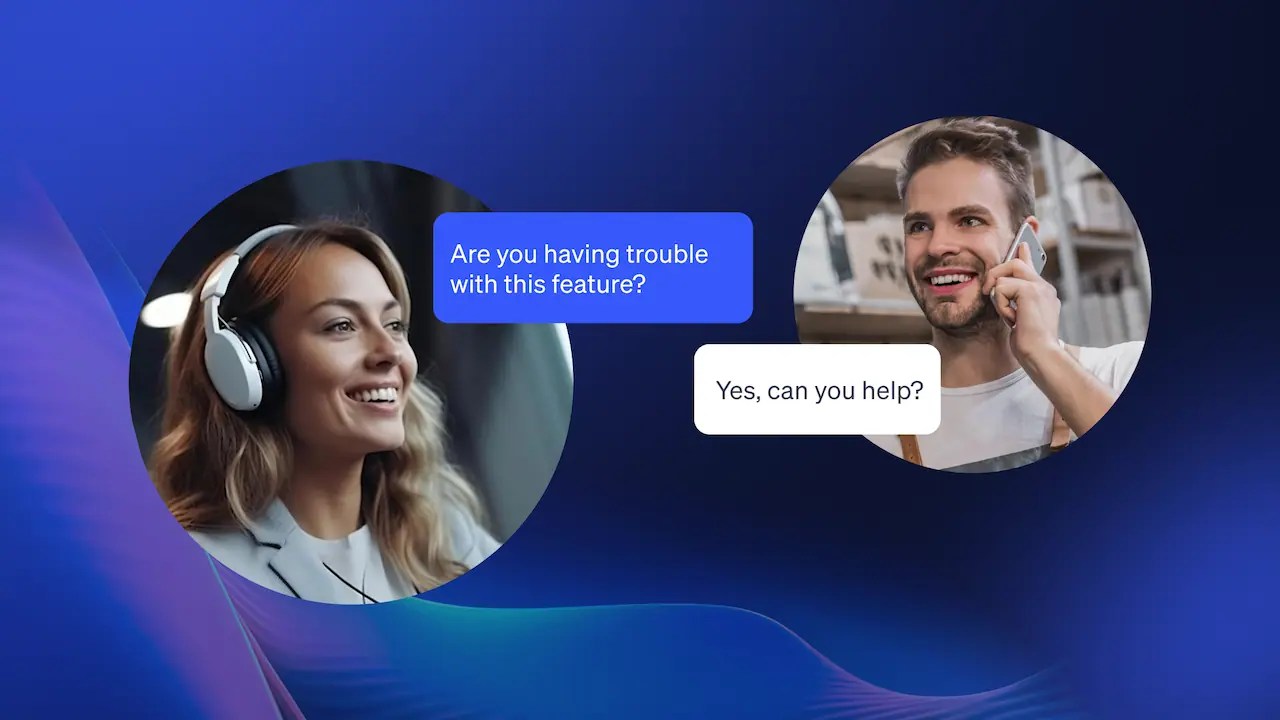
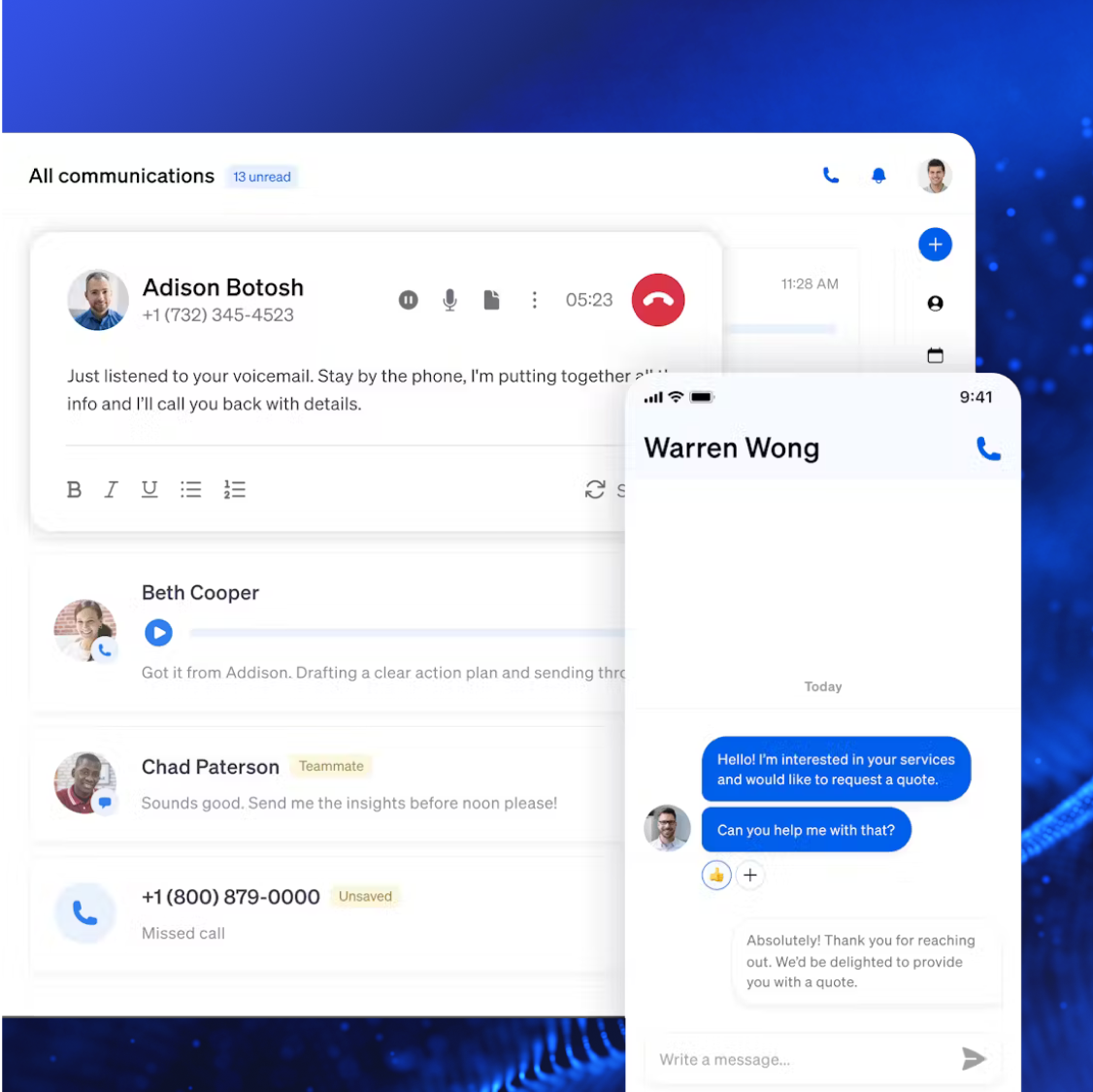








 VoIP
VoIP 










